14 February 2023
Visit Commonwealth war graves in Arras, France
The historic city of Arras was at the heart of some of the most important battles of the World Wars. Discover the history of Arras war graves here.
What is Arras famous for?

Faubourg D'Amiens War Cemetery within the city of Arras
Arras has a very long history stretching back to pre-Roman times.
Did you know the city was originally founded by the Belgic Atrebates tribe decades prior to the Roman conquest of Gaul?
Since its founding, Arras has been an important urban hub. It was the site of a very wealthy Benedictine abbey during the Middle Ages as well as being an important centre for the medieval wool trade.
Beneath its city streets, Arras hides an incredible network of tunnels and catacombs. These would prove incredibly useful during the World Wars, housing medical facilities, providing cover from shells, and for transporting men safely around the city.
In terms of World War history, Arras was the site of several important battles during both World Wars.
Arras war graves represent thousands of men from around the Commonwealth who fought and fell on battlefields in and around this famous city.
How many died in the Battle of Arras?
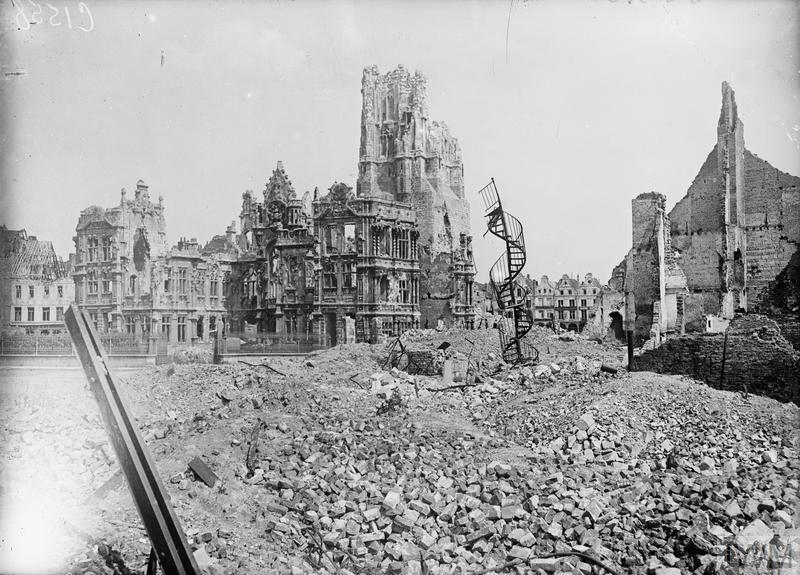
The ruins of Arras Town Hall sit amongst the rubble. The city was smashed to bits during the Great War (© IWM Q 2049)
That depends on which Battle of Arras you are referring to. As we touched on earlier, the city saw fighting in both World Wars.
The first battle of Arras was one of the earliest major actions of the Great War. It took place between 1st-4th October 1914 during a period called “The Race to the Sea”.
The race was an attempt by the Allied Entente Powers of France and Great Britain and their Imperial German opponents to outflank one another by securing the flanks bordering the French coast.
At one point, 3,000 German soldiers had occupied parts of the city. They were eventually driven out and the First Battle of Arras ended on 4th October with the French holding the city.
Arras was only ten miles from the frontlines of Northern France. It was a choice target for German artillery fire. The picturesque medieval city was smashed to pieces, with many historic buildings reduced to rubble.
The Second Battle of Arras involved Commonwealth forces, including Australian, New Zealand, South African, British, and Canadian troops.
The battle, which was fought between 9th April-16th May 1917, began with the Canadians capturing Vimy Ridge. British troops were also to advance at the longest distance seen in the war yet.

British infantry advance from a reserve trench at the start of the Second Battle of Arras (© IWM Q 5119)
However, like many of the Great War’s fiercest battles, the advance stalled. German counterattacks blunted the Commonwealth forces’ momentum. The fighting around Arras drew once again into a bloody stalemate.
Casualties were high for little or no strategic gain. Losses, including killed, missing, or wounded, totalled 158,000. Many of the casualties commemorated in war graves near Arras were killed in this battle.
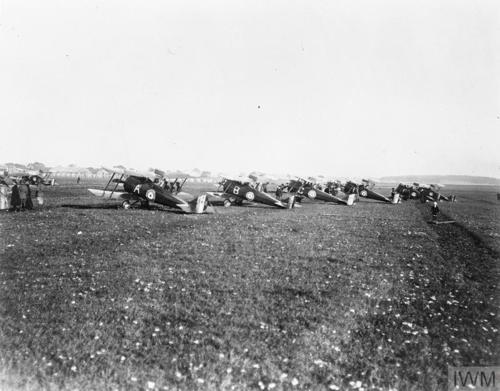 Image: Planes of the Royal Flying Corps in 1917. April of that year was one of the air service's blackest days (© IWM Q 111871)
Image: Planes of the Royal Flying Corps in 1917. April of that year was one of the air service's blackest days (© IWM Q 111871)
In the skies above Arras in 1917, the Royal Air Force was engaged in a grinding air battle called Bloody April.
By the end of the month, the RAF had lost 250 aircraft and 400 pilots and aircrew. It was the highest loss of life for Commonwealth air forces until World War Two. As such, you will find many RAF personnel amongst the war graves in Arras.
During World War Two, Arras was the site of a tank-led counterattack designed to slow down the Wehrmacht’s blistering advance across France.
As was typical of the actions during the Battle of France in 1940, the Allied effort was stymied by a lack of coordination between the British and French.
An initial armoured thrust by British forces, led by the Matilda and Matilda II tanks, showed good signs. The British tanks fell on surprised Wehrmacht supply columns outside Arras, hitting supply convoys and causing confusion among the German ranks.
Very quickly, the Wehrmacht got organised and was able to halt the British attack. An attack by French troops around another flank of Arras never materialised.
Even though the British had captured around 400 German prisoners, knocked out 37 German Panzers, and inflicted 350 casualties, the return was heavy. The British lost 74 irreplaceable tanks and 500 men killed, captured, or wounded.
One silver lining to the 1940 action at Arras is that it caused the Germans to slow their race across France. The Allies could organise at Dunkirk and evacuate hundreds of thousands of men to carry on the fight.
Arras stayed in German hands until its liberation by Commonwealth and Free French infantry on 1st September 1944, part of the Allies’ advance to victory in Europe.
Who is buried in Arras war graves?
Commonwealth war graves in Arras commemorate service personnel who fought and died in the battles around Arras.
Both World Wars drew on the manpower of the British Empire. Servicemen from Africa, Australasia and Asia fought and died on Arras battlefields.
The nations represented in war graves in Arras include:
- United Kingdom
- New Zealand
- South Africa
- Australia
- India
- Canada
How many war graves are in and around Arras?

Over 2,500 Commonwealth servicemen are buried in Faubourg D'Amiens War Cemetery
Just shy of 39,000 Commonwealth personnel are commemorated in our Arras cemeteries and memorials:
War cemeteries in Arras:
- Faubourg D’Amiens War Cemetery – 2,678 identified casualties, 2,688 total
- Arras Communal Cemetery – 24 identified casualties, 27 total
Arras war memorials:
- Arras Memorial – 34,742 casualties
- Arras Flying Services Memorial – 979 casualties
If we broaden the scope of cemeteries and memorials in battlefields, towns, and villages around the city, many more war graves spring up.
For example, Arras Road Cemetery Rolincourt is outside the city, but the 1,000 or so burials there would be considered Arras war graves.
Starting from Vimy to the north, the site of one of Canada’s greatest military victories, to Noreuil to the south of Arras, we maintain Commonwealth war graves in several locations around Arras.
Including these casualties takes our Arras war graves total to approximately 26,000 burials. The Vimy Memorial commemorates over 11,000 fallen Canadian soldiers and officers. That brings our total up to 37,000 or so commemorations.
Incorporating the war graves and memorials in Arras itself, the Commonwealth War Graves commemorates over 70,000 in the vicinity of Arras.
How personnel are commemorated depends on whether they were buried or have no known grave.
For instance, our cemeteries contain war graves. These are either identified service personnel from the world wars or unidentified casualties. Those unidentified casualties’ headstones bear the inscription “Known only to God”.
If identified, a casualty’s headstone will bear their name, regiment, and date of death at the very least.
War memorials in Arras commemorate the names of those who died during the World Wars but have no known grave. As they have no known earthly resting place, their name will be displayed on a memorial’s name panels.
How to find war graves in Arras
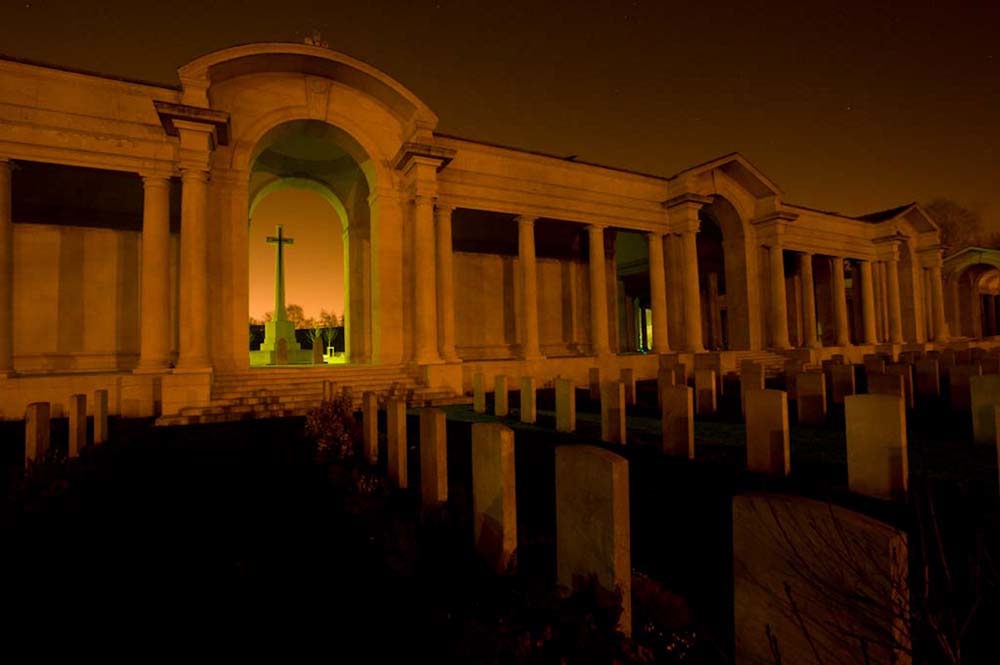
The Arras Memorial commemorates over 34,000 casualties with no known grave.
To find war graves in Arras, please use our Find Cemeteries and Memorials tool.
When you are on that page, select “France” from the Country drop-down and “Pas-de-Calais” in the “Locality” drop-down. That will include a list of all the CWGC sites in that area. You will be able to sort alphabetically, and Arras sites should appear near the top.
Alternatively, you can simply type “Arras” in the “Name” field on the Find Cemeteries and Memorials menu. That will bring up all the sites in the area where our Arras war graves and casualties are commemorated.
Map of war graves near Arras
Visiting war graves near Arras
WW1 graves in Arras
Command of Arras was transferred by the French to their British allies in the spring of 1916. Work on British and Commonwealth cemeteries in and around the city began in March of the same year.
Faubourg D’Amiens Cemetery is the largest war cemetery in Arras and the sight of many WW1 war graves. Over 2,650 casualties from across the Commonwealth are buried here, representing men from the United Kingdom, India, Australia, Canada, South Africa, and New Zealand.
There are even some German and American burials amongst Faubourg’s war graves.
Faubourg was used by field ambulances and combat units until November 1918 during the final march to victory on the Western Front.
Within the grounds of Faubourg D’Amiens sits the Arras Memorial. As we touched on earlier, this commemorates men who fell fighting in the Arras sector between the spring of 1916 and August 1918.
Almost 35,000 Commonwealth officers and servicemen are commemorated on the World War One Memorial.
Like the cemetery, the Arras Memorial was designed by architect Sir Edwin Lutyens with sculpture by Sir William Reid Dick.
Lutyens was one of our most iconic architects, including the Tower Hill Memorial and Delhi Memorial (India Gate).
Next to the Arras Memorial, you’ll find the Arras Flying Services Memorial.
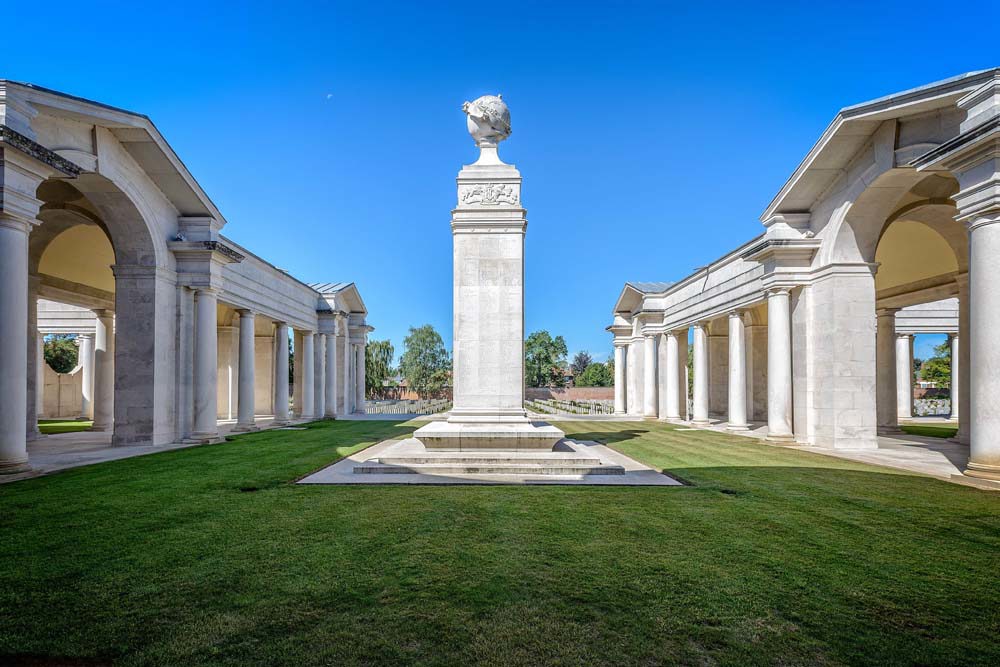
Men of four Great War air forces are commemorated on the Arras Flying Services Memorial.
As its name suggests, the Arras Flying Services Memorial commemorates aircrew and pilots from across the Great War. The memorial specifically commemorates airmen who were killed across the whole Western Front, rather than just Arras.
Just under 1,000 names are commemorated on the Arras Flying Services Memorial. They represent service personnel from:
- Royal Air Force
- Royal Flying Corps
- Australian Flying Corps
- Royal Navy Air Service
Further WW1 war graves in the Arras sector can be found in Arras Road Cemetery at Roclincourt a small distance away from the city.
Arras Road Cemetery contains over 1,000 war graves but only a quarter of these are identified.
We also maintain around 25 WW1 war graves in Arras Communal Cemetery.
WW2 graves in ArraS
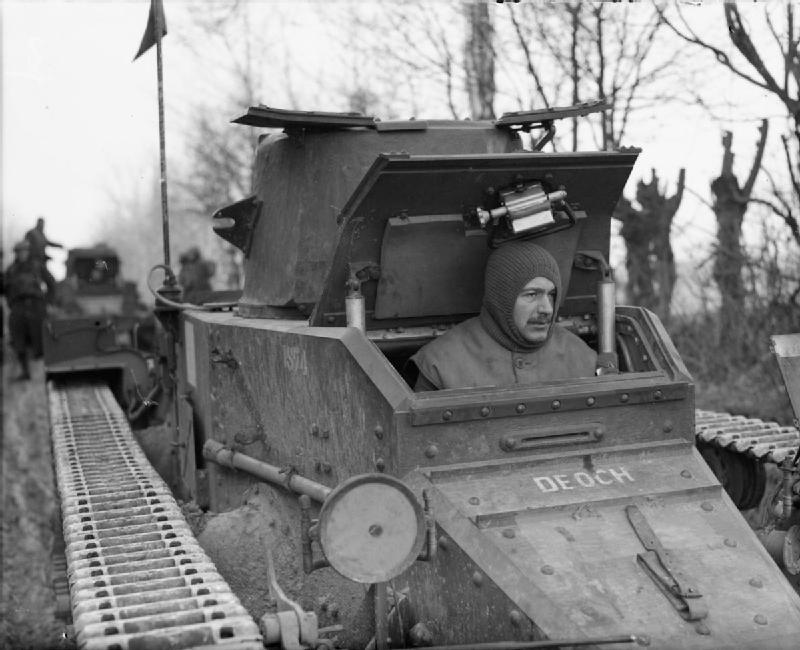
A World War Two British tanker in the cramped driver compartment of a Matilda I tank. Matilda Is were used during the Arras counterattack of May 1940 (Wikimedia Commons)
Unlike Great War casualties, WW2 war graves in Arras are not concentrated in dedicated cemeteries or on memorials.
Instead, World War Two burials can be found in the older cemeteries.
For example, Faubourg D’Amiens contains only eight burials from World War Two, dating from casualties taken between 1943 and 1944, despite holding thousands of World War One casualties.
Three war graves can be found at Point Du Jour Cemetery.
A larger number of World War Two burials can be found within Arras Communal Cemetery. 27 casualties, 24 of which are identified, can be found there.
British war graves in Arras

A British military band playing in a town square in Arras in 1917 © IWM Q 6407
Typically, British war graves can be found all over Arras and its surrounding cemeteries and memorials.
UK troops formed the bulk of the fighting forces engaged in the Arras battles, supported by other Commonwealth nations.
There are multiple cemeteries built to house British war graves in Northwest France.
The largest of these is Duisans British Cemetery, around 5 miles west of Arras city centre. Duisans holds over 3,000 war graves, the bulk of which are from the UK. Other Commonwealth nations are represented here too.
Other large-scale cemeteries containing British war graves in Arras include:
- Faubourg D’Amiens
- Wancourt British Cemetery
- Feuchy Chapel British Cemetery
British casualties are ubiquitous on the battlefields of Northwest France.
War poets' graves in Arras
War poetry leapt from the minds of many men serving on the World Wars frontlines. They turned their experiences into some of the most widely read, vivid prose the literary world has ever seen.
Several war poets are either commemorated or buried in Arras.
Edward Thomas
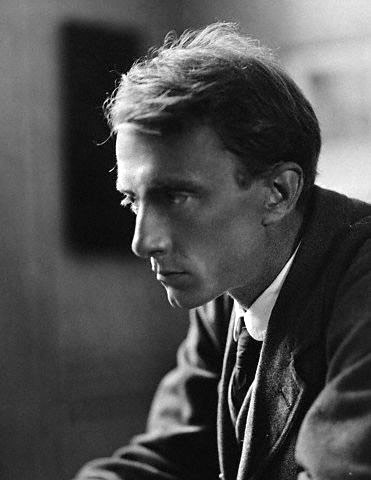 Image: War poet and Arras casualty Edward Thomas (Wikimedia Commons)
Image: War poet and Arras casualty Edward Thomas (Wikimedia Commons)
Edward Thomas lived the life of a successful writer and literary critic prior to his enlistment in 1915. He was motivated to join after taking seriously his friend Robert Frost’s poem The Road Not Taken.
Joining the Artist’s Rifles in 1915, Edward was first promoted to corporal and was quickly commissioned into the Garrison Artillery as a second lieutenant. He arrived in France on Easter Monday 1917 at the Arras front.
His most famous poem is In Memoriam, blending the realities of war with images of the natural world:
The flowers left thick at nightfall in the wood
This Eastertide call into mind the men,
Now far from home, who, with their sweethearts, should
Have gathered them and will do never again.
Edward was killed soon after. His official cause of death was death by shell burst with the concussive force stopping Edward’s heart. Other accounts suggest the poet was shot clean through the heart.
Edward Thomas is buried at Agny War Cemetery.
T.P. Cameron Wilson
Theodore Percival Cameron Wilson, Jim to his friends, had already had several poems and writings published prior to the Great War. His novel, The Friendly Enemy, had been released in 1913.
Like many writers and poets of his generation, Theodore’s career was cut terminally short by World War One.
Theodore joined the armed forces soon after Britain’s declaration of war in August 1914. He quickly earned a commission with the Sherwood Foresters. Theodore was later moved to a staff position away from the frontlines, meeting General Sir Douglas Haig.
While serving in the trenches, Theodore wrote his most famous poem, Magpies in Picardy, but was thoroughly shaken by the devastation he witnessed.
Theodore was promoted to captain and was moved back to a frontline role in March 1918. He was killed during a German assault around Hermies shortly after.
As Theodore has no known war grave, he is commemorated on the Arras Memorial.
Bernard Pitt
 Image: Second Lieutenant Bernard Pitt (Wikimedia Commons)
Image: Second Lieutenant Bernard Pitt (Wikimedia Commons)
Described as being full of “dash and pluck”, Bernard Pitt was on course for a staff position when he was killed by a German mine in Arras.
Bernard had been a lifelong literature lover. Prior to joining the British army in 1915, he had been working on a study of Anglo-Saxon literature with his colleague Alfred J. Wyatt.
Heeding the call in 1915, Bernard was commissioned as a Second Lieutenant in the Border Regiment. He was later attached to the 47th Trench Mortar Battery and was serving in fighting around Arras when he was killed.
A terrific explosion engulfed Bernard while he was observing his men’s mortar fire.
Unusually, his widow Florence was not given a sanitised version of his death as was customary at the time. Instead, Florence was informed that Bernard’s body had been destroyed and no traces of him found.
Bernard’s collection of writings from the trenches Essays Poems Letters was first published posthumously in 1917.
Like T.P Cameron Wilson, Bernard Pitt is today commemorated on the Arras Memorial.
Experience the CWGC in Arras, France
The Commonwealth War Graves Visitor Centre is a must-visit for anyone interested in the war graves around Arras.
Voted Best Tourism Project in Europe at the 2019 British Guild of Travel Writers’ International Tourism Awards, the Visitor Centre shines a light on the work of the Commonwealth War Graves Commission.
Visitors get a behind-the-scenes look at what goes into maintaining our war graves in France and around the world, as well as the history of an organisation that has been caring for the fallen for more than 100 years.
The Visitor Centre is in Beaurains in the heart of war graves country. Come and see us next time you’re planning a trip to the former battlefields of the First World War.

